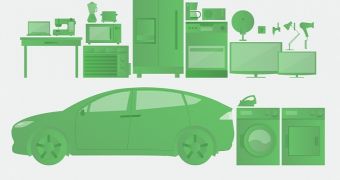Conventional engineering has not allowed for a significant enough shrink in size when it comes to power inverters, but the folks at Google and the Institute of Electrical and Electronics Engineers, IEEE for short, want to see them pint-sized.
Power inverters are very important things, capable of converting the energy harnessed from wind, electric vehicles and the sun into something that a house's power grid can use. In other words, a power inverter turns DC power into AC power.
The main problem with power inverters is their size: they are about as large as a picnic basket. This is fine for large power grids, but not very practical for everything else.
That's why the Little Box Challenge has been opened: it wants you to figure out how to shrink power inverters to a tenth of the current size, without any performance or endurance drawbacks.
In technical terms, a kW-scale inverter would have to be the size of a small laptop while providing a power density higher than 50W per cubic inch.
The one who manages to pull it off and outshines everyone else submitting a design through this challenge will basically “change the future of electricity,” and with it, the world.
Of course, if you're interested in more than fame, never fear! The challenge will reward you with one million dollars (€742,700) if you submit the best idea. Not bad for a short-term incentive, if we do say so ourselves.
The winning small form factor inverter will have to be rigorously tested of course, but if it passes muster, especially endurance-wise, it will be used in many ways. For example, it will help create power microgrids in remote parts of the world, where there are no huge hydroelectric power plants or electricity sources great enough to provide power to everyone normally.
Not that the inverters won't have “consumer” applications. The ones who set the challenge specifically pointed out that the device would have what it takes to enable a car battery to power your entire house during a blackout.
To make this newest dream happen, engineers may have to experiment with materials not normally used in electronics and electrical grids. They won't win any points, however, if their design cannot be implemented due to material shortage. The whole point is to make something that can be easily, or reasonably easily, mass produced, and rare substances or hard-to-make components obviously go against that.

 14 DAY TRIAL //
14 DAY TRIAL //